Big things afoot for designer
LIKE many fashion lovers Jules Musgrove cut her teeth by making outfits for her Barbie dolls, and today she has her own range of hand-dyed Melbourne-made socks.
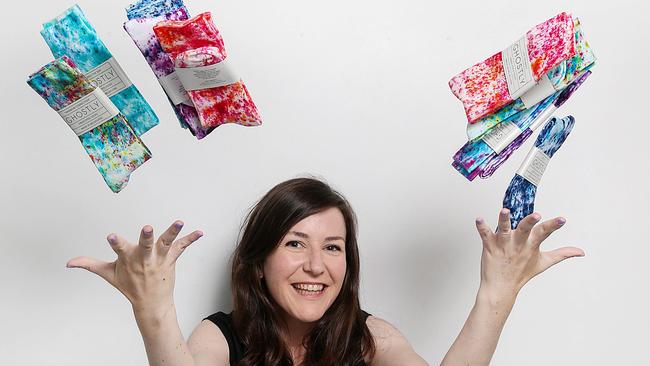
Business
Don't miss out on the headlines from Business. Followed categories will be added to My News.
LIKE many fashion lovers Jules Musgrove cut her teeth by fashioning new outfits for her Barbie dolls.
“Barbie always had a fancy new circle skirt and tube top and I made a tonne of scrunchies,” she said.
Those early years laid the foundation for an interest in independent design, which has led to her producing her own range of hand-dyed Melbourne-made socks.
Having completed a Bachelor of Fine Arts at RMIT, Ms Musgrove opened a vintage clothing shop in Fitzroy called Poppet in 2007.
“After about four years, I grew tired of selling vintage clothing and had more of an interest in locally made independent design, this led me to changing the direction of my shop,” she said.
In 2011, Ms Musgrove closed Poppet and reopened as Heroes & Villains, stocking locally made and designed independent fashion, accessories and homewares.
By 2013, she was looking for new challenges and came up with the idea for a label called Ghostly. “I had originally planned it to be a fashion label making women’s clothing with a focus on hand-dyeing,” Ms Musgrove said.
“However one of my first products, the hand-dyed socks, did so well that I decided to make that the focus of the label. I personally am a big fan of socks so this seemed like a great path to go down.”
While the product was primarily pitched at people in their late teens and early 20s, Ms Musgrove found people of all ages warmed to her socks.
A lot did not want to buy “fast fashion” and preferred to shop ethically and locally, she said. The socks are made in a Melbourne factory that is one of a diminishing number of local manufacturers.
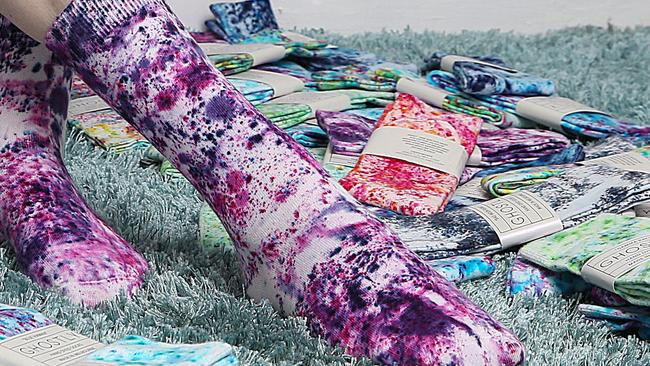
“Having an ethically made product is important to my business and is a quality that I believe my customers appreciate,” Ms Musgrove said.
Having a good relationship with the Melbourne factory was also important for her business and allowed for greater flexibility.
Once she buys the socks she hand-dyes, washes, irons and packages them.
“I have done scarfs, sarongs, tote bags, T-shirts, kimonos and even hand-dyed doona covers,” she said.
Ms Musgrove said doing all the work herself was labour intensive but it made for small-batch socks that were unique and difficult to copy or mass produce.
The socks are mostly sold online and wholesaled to stores. Ms Musgrove also sells at inner-city markets such as the Finders Keepers Market and the Big Design Market.
“I find this is a really good way to get the label out there and meet potential customers and stockists,” she said.
Ms Musgrove said she felt she was at a turning point with the business.
“I am currently looking at new directions to take the business. I want to grow the business but am constrained by my current product.
“There is no way to scale up the production of my hand-dyed socks without losing some of the quality of the product.”
She said it was a catch-22.
“Having one person doing the bulk of the work allows a really high level of detail and quality control to be given to each pair of socks, something that could not be replicated in a larger scale production line.”
Ms Musgrove was uncertain as to whether people would pay more than the $18 price point for her socks.
However, she said there were mass-produced alternatives being sold for more than she charged.
“I like the idea of making something nice and putting it out in the world so that people might enjoy it.
“If I can make something locally that is ethical and sustainable, that is a step in the right direction.”
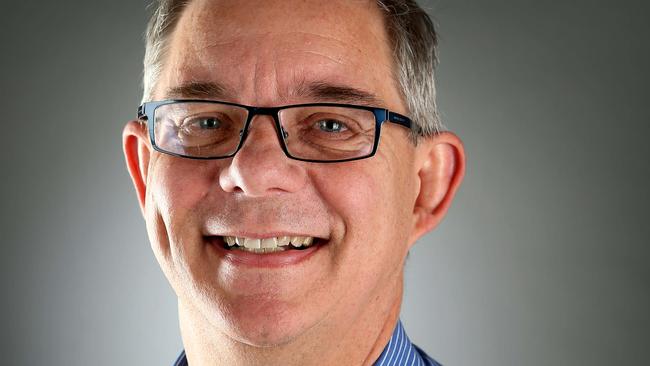
JOHN DOWNES: MENTOR, MEDIUM-SIZED BUSINESS GROUP ACCORO
WELL done Jules! Ghostly sounds like a fun, socially responsible, small-batch, hand-made sock brand.
You do everything, keeping it all perfect at a very modest price point. Yet this stops you paying yourself a reasonable wage for your delightful creativity and hours and hours of hard, careful, loving work.
Are you worth more than that? I think so.
Why do every single step? It restricts your production quantities when the reality is, you simply don’t need to.
Look hard at your process to see where you and only you add the most critical value to the socks. Is it the selection of suppliers, the dyeing of the socks, the washing and drying, the ironing, the packaging, the preparation for postage, the spruiking to resellers or to customers on social media?
Only three of these are “Jules-only” tasks. Nothing else requires your creative genius and personality.
Get the rest done by someone else if you want to maintain you uniqueness, but increase volumes and returns.
Jules, you can double your output and returns if that is what you desire.
If you don’t want that, be comfortable that this is a lovely income-supplementing hobby and enjoy it for the expression of your creativity. I wish you pleasure, fulfilment and to earn a just financial reward from your pursuit of love.
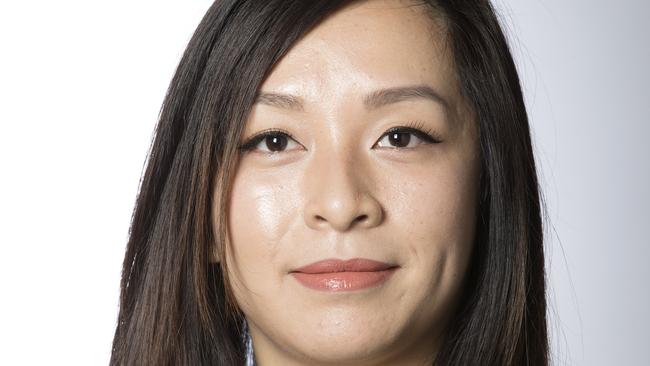
VIVIAN VO: MELBOURNE INNOVATION CENTRE
GHOSTLY is a wonderfully unique brand, and it is refreshing to know these products are locally sourced and hand-dyed. People seeking to avoid fast fashion tend to be attracted to ethical and sustainable apparel and accessories.
Fashion is a fierce industry and a common challenge faced by businesses during their growth is keeping up with the market. Items that are considered fashionable and trendy can just as quickly become outdated.
It is important to continually learn about the industry and your customers. The more you know, the better you can meet their needs. All you have to do is ask.
Add a sign-up or newsletter function to the website to collect customer details, and add extra fields on preferences for styles and trends. This information can enhance existing products, develop new product ideas and determine whether it is viable for your business to expand.
When contemplating the expansion of a cottage industry business, firstly consider steady growth instead of exponential. Evaluate your current production process (time spent, techniques used and cost incurred) and identify any labour-saving areas.
Business growth can be limited by financial constraints. Consider crowdfunding campaigns as a way to validate the demand for the hand-dyed socks as well as secure a portion of production costs.
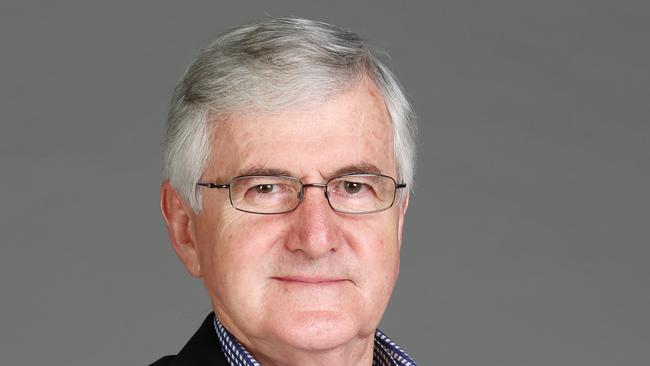
BRUCE HALL: MENTOR, SMALL BUSINESS MENTORING SERVICE
JULES is at the crossroads. She has a great product, that is visually strong and with broad appeal. However, she needs to decide whether it is going to be effectively a hobby, or a real business.
The starting point is to know her costs. Jules needs to determine what the price point needs to be to provide her with a reasonable level of compensation for the work involved.
Whatever that price works out to be, that is the price she should charge.
It then becomes a marketing issue.
Jules needs to build a story around the product to support the price.
As the design element is so strong, I believe it would be possible for the product to be mass produced and still find a market. It just needs the right marketing and story.
Potentially, the Ghostly brand could extend well beyond socks, providing the same branding essence is retained.
From a marketing perspective, the product lends itself well to the web and social media platforms.
But it is not enough to have a presence on these platforms. Time needs to be invested to understand how they work and what is needed for success.
None of this is “rocket science”. It is just an understanding of how things work.
Small changes and, crucially, regular production of fresh content can deliver remarkable results.


